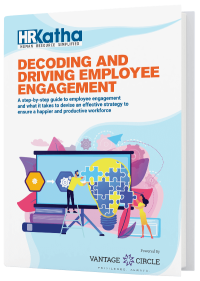5 Easy And Cost-Effective Ways to Reduce Employee Turnover

Do you know what's more complicated than finding top talent? Retaining them. Employee turnover is an issue for all organizations, especially for small businesses or startups. Even leading companies are burdened with the headache of high turnover rates.
Employee turnover is simply the percentage of employees in an organization that leaves and is replaced with new employees. It is, of course, calculated as a function of a period. For example, annual turnover rates would mean the number of employees replaced by the company in a year.
Why does Turnover occur?
We usually have here two kinds of turnovers: Voluntary turnover and Involuntary turnover.
Involuntary turnover occurs when the employment of individuals is terminated due to them being poor performers or retirement. We can do nothing much about involuntary turnover as the decision is generally taken by the employer.
Things change quite a lot when we talk about voluntary turnover. Voluntary turnover is when employees leave an organization to switch companies or for further education or any other reason taken voluntarily by the employee.
What makes turnover so dangerous is when an employee leaves, they take years of experience with them. On top of that, sometimes, it tips the first domino of subsequent turnovers when an employee leaves.
Many companies believe that all efforts in reducing turnover are likely to go in vain. In the end, they have to hire an external consultant. We don't think so. Proper planning can help you tackle employee turnover effectively and cheaply. Here are a few ways in which you can tackle it.
1. Analyze
The most important step?
Yes.
The most underrated step?
Yes.
People usually underestimate the importance of properly analyzing a problem and jump straight to solving them. Yes, it is vital to get to the solving part as soon as possible, but you have to know what you are solving.
The best part? You get to be a Sherlock on this one! Analyze the data of a few years and analyze patterns emerging. Some clues might be people leaving during a particular month or maybe from a specific department or floor.
And most importantly, are you gathering appropriate data before your employees are leaving the organization? Gathering data through exit interviews is crucial for understanding why your company is facing high turnover rates.
And if you are scared of seeing negative reviews in your feedback, don't worry. You will soon read those reviews on online review sites.
2. Giving preference to EQ
There's no denying that it's harder to find a guy who knows how to deal with emotional situations in work than a technical expert. We don't imply that you go overboard with hiring a nice guy if he is incompetent for the job. Set a minimum threshold for experience and the know-how of the work under which you won't budge even if he was awarded the world's nicest guy.
The emotional quotient of your employees is a crucial factor for the smooth functioning of your organization. Employee turnover rates shoot up in organizations where there are high instances of workplace conflicts. Higher EQ translates into better bonding and less competition in the workplace, and finally, lower turnover rates.
3. Make Your Employees More Involved
We have seen quite many employees leave an organization due to their lack of involvement in the company's decision-making process. It can be as significant as the complete rebranding of your company or maybe as minute as choosing the following brand of coffee for the month.
When you make your employees more involved in the decision-making process, it creates a strong bond between the company and the individual. Taking your employee’s feedback gives them a feeling that they are a valuable part of the organization and their input is as important as the top management.
4. Remote Workers All The Way
What's better than not having to come to work on Mondays, right? Giving your employees the flexibility to work from home(or anywhere, in fact) is a great way to not only reduce turnover but spike productivity. With the flexibility of working from home, your employees can manage their work-life balance more effectively and ensure that they deliver what the organization requires.
Yes, we know remote working is not very feasible for all jobs and all companies. When there is an option, remote working has constantly improved efficiency and the quality of the work. Of course, no chit-chat, no water cooler gossip, and no indefinite lunch break.
5. Hiring the Right Fit
It seems like a no-brainer, right? Well, not so much. Big organizations are notorious for hiring misfits. Hiring misfits drain the workplace's morale and generally tend to be a bad influence on the rest of the flock.
Suppose employees are not a perfect fit for your organization. In that case, they are likely to be unhappy with their work. Generally, they leave after a short period without providing any substantial returns for the company. It results in loss of pay, loss of personnel, and loss of time. On top of that, frequent attrition might motivate even the most loyal and dedicated employees to reconsider their career choices.
Finally
One thing is for sure. You can never entirely minimize turnover rates to absolute zero. There will always be employees who won’t fit in your company culture and will always be in a constant hunt for opportunities to leave. You can never convince those employees. You can provide a great company culture and a great place to work and reduce turnover as cheaply and as effectively as possible.

Vantage Circle is a simple AI-powered Rewards & Recognition Platform for upgrading your employee experience and engagement for better productivity.






